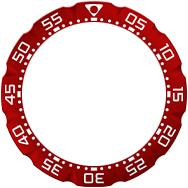





This ‘in-house’ movement begins life as a square plate of brass which is subsequently placed in a state of the art Computer Numerical Control (CNC) machine. This machine does not use lubricant, making it less harmful to the environment. The CNC machine mills the brass using a series of tools. These tools mill holes and cut shapes to incredibly small tolerances, expressed in microns (1 micron = 0.001mm). The programming of such machines necessitates much expertise and time. However, the resultant components are made to a level of precision which surpasses any handcrafted techniques. Having been machined, the part becomes an intricately shaped disc of brass, termed a ‘main plate’. This acts as the chassis of the movement.

The same technique for making the main plate extends to making the ‘bridges’. These parts help to keep various wheels, pinions, pivots and other tiny components in place. Various movement components, including the main plate and bridges are then ‘finished’. These metal parts are then subject to an electroplating process, imparting a thin layer of nickel plate to each surface. Following electroplating, the movement is assembled. A high-tech machine adds rubies to the main plate and bridges prior to assembly. These rubies act as reservoirs for lubricant and are set in the optimal position. This automated process provides consistent results. TAG Heuer uses a cutting-edge system to ensure the precise quantity of lubricant is added.

The regulating organ is then added to the watch and the balance wheel begins to oscillate. The movement is tested in various positions in order to check that it delivers excellent Swiss precision. The heart of the watch has come to life and will subsequently be housed within the case of TAG Heuer timepiece.




